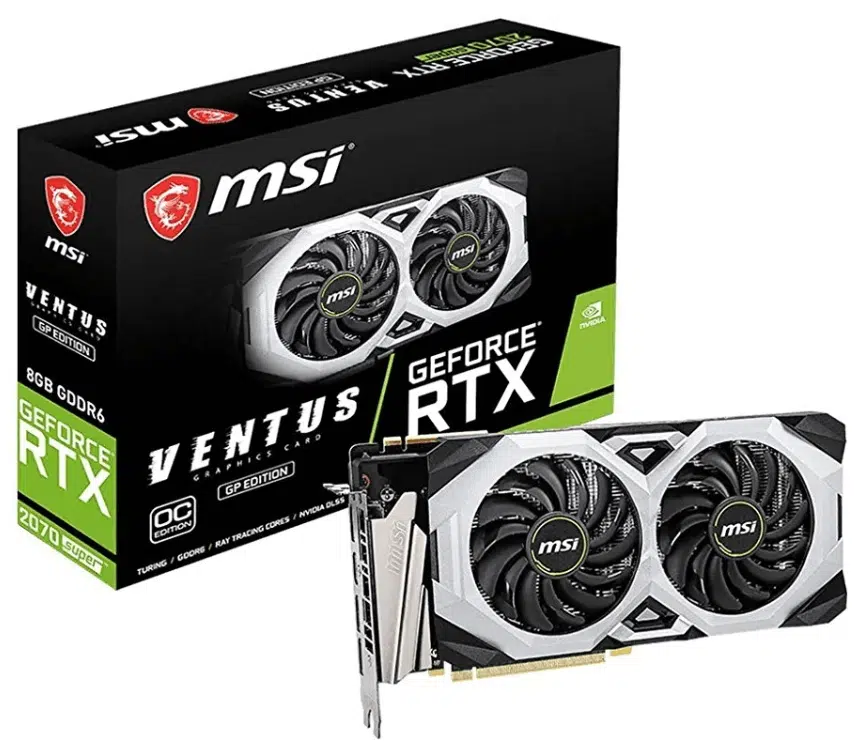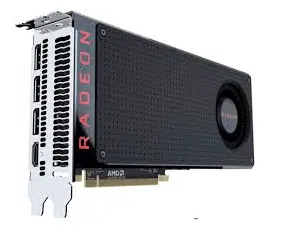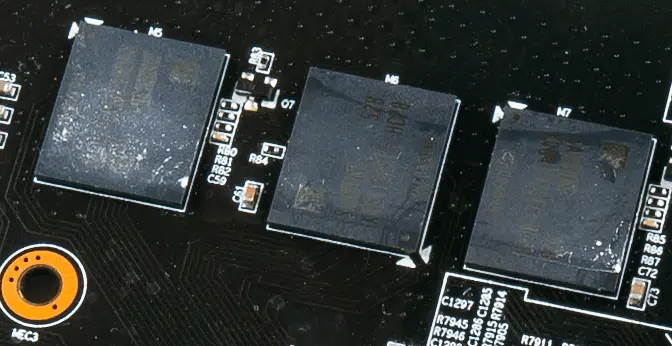TLDR
The best GPU for crypto mining depends on a few factors, including how much power your computer can provide and how much money you want to spend.
Start with a low-end card like the Radeon RX 560 or GeForce GTX 1050 Ti if you want a quick ROI. These cards have fewer RAM and VRAM chips, run at lower clock speeds, and take longer to complete hashes. But they’ll still get the job done in most cases.
For serious miners willing to spend more time tweaking settings and adding cooling fans, we suggest using an AMD GPU instead of an NVIDIA GeForce card. The AMD series has more compute units per chip and offers increased performance compared to previous generations of GPUs.
It’s also worth noting that these graphics cards usually use proprietary cooling solutions, which require additional hardware and software support to run smoothly in most cases.
Introduction
The cryptocurrency mining industry is growing at an exponential rate. As the overall value of cryptocurrencies has increased, so has the electricity cost and difficulty level of mining them.
The reward for mining a cryptocurrency is determined by an algorithm that depends on how many coins you can find in your block. The more coins you mine, the more chances you have to find a block and earn your share of the reward.
This article will explain what makes GPU mining so popular, how it works, and how to choose a GPU mining hardware that is best suited for mining cryptocurrencies.
Here is what you should know if you want to start cryptocurrency mining.

Best Mining GPU (Graphics Card) for Bitcoin & Ethereum – What You Need to Know
GPU stands for graphics processing unit, which is a specialized processor that’s designed to process graphics. Most modern computer systems use GPUs, from laptops to desktops and servers. They provide the power and speed to run video games and other demanding applications.
Mining is the process of solving math problems using a computer. It’s a way for computers to compete to find new blocks of information in various types of data — like Bitcoin or Ethereum — that the computers can use to verify and make money from.
With the growth of blockchain technology comes increased demand for GPUs, which are necessary for mining cryptocurrencies like Bitcoin or Ethereum (ETH). This demand has led to increased prices and limited supply, causing them to soar during periods of volatility in cryptocurrency market value.
The most important part of any GPU is its memory. The more memory, the better for Mining, but it doesn’t matter how fast your memory is if you don’t have enough power to run your GPU at full speed.
The memory used by GPUs is called GDDR5, and there are two types of this memory: standard and high-end. Standard GDDR5 has a clock speed of 1750 MHz, while high-end GDDR5 has a clock speed of 2133 MHz.
While having enough RAM to run your rig at full speed is essential, having too much RAM can also be harmful because it takes up space on the motherboard and makes it harder to overclock the GPUs.
If you have a lot of spare RAM on your motherboard, you can try running several GPUs simultaneously instead of just one or two.
What is the Best GPU for Crypto Mining?
Let’s look at the best GPU for crypto mining. The best GPU for mining Bitcoin depends on your budget and your needs. If you have a high-end gaming PC, use a high-end graphics card. But if you want to start Mining, starting with something as cheap as possible is best.
The best GPUs for Mining are those with low power consumption and heat output, so they don’t need fans or water cooling.
The most popular ones are the Radeon RX 580 and GTX 1060 3GB. Both of these cards will run at about 60 watts per card, which means you can fit four in your case if you want to get serious about it.
NVIDIA RTX 3060 Ti LHR ($450 – $600)

The best GPU for mining crypto is the NVIDIA RTX 3060 Ti LHR. It’s the best GPU for mining crypto coins and the best GPU for gaming in its price range.
The NVIDIA RTX 3060 Ti LHR is the only single-GPU graphics card on the market that can handle crypto mining and high-end gaming at a price similar to what you would pay for a GTX 1080 Ti.
The key to getting the most out of this particular GPU is its clock speeds, which are higher than any other GPU in its class. Your hash rate will also be much higher than other video cards in this category.
This card has such high clock speeds because it has GDDR6 memory, is optimized specifically for cryptocurrency mining, and has less latency than GDDR5 or GDDR5X RAM used by most other GPUs today.
It has a TDP of 180W, and it can produce 80 MH/s in a single card. You will earn about $9 daily if you mine with one of these cards.
The hash rate of this card is higher than other cards in its class because of its 8GB GDDR6 RAM. You should be able to finish Mining in less than two years if you use an Antminer S9 Lite.
RTX 3060 Ti LHR is your best choice. It has a hash rate of up to 29 Mh/s, which means it can be used for mining ETH, EOS, and many other tokens.
The reason why it’s so popular is that it uses less power than other models, which makes it perfect for Mining in places with limited electricity supply.
Supported cryptocurrencies:
- Verticoin
- Ravencoin
- Ethereum
- Ethereum Classic
- Grin
Pros
- All-purpose
- Favorable entry price
Cons
- Quite expensive
- Not the fastest in the market
NVIDIA GeForce RTX 3090 ($1,900 – $2,200)

Suppose you want to build a robust, reliable, and powerful mining rig that can handle the intense demands of mining. Several high-performance GPUs can now handle the heavy workloads of crypto mining. The NVIDIA GeForce RTX 3090 is one of them.
The GeForce RTX 3090 is a powerful graphics card for cryptocurrency mining. It has 8GB GDDR6 memory and a clock speed of 1750 MHz. This means it has enough horsepower to run any cryptocurrency miner-related software efficiently.

The GeForce RTX 3090 has a hash rate of over 3600 H/s (Hashing Power).
This means it can mine cryptocurrencies much faster than other GPUs today. It also has a TDP (Thermal Design Power) rating of 175 Watts, making it much more energy-efficient than other video cards today.
NVIDIA GeForce RTX 3090 supports mining algorithms such as Equihash, Ethash, and Zcash (ZEC).
It also delivers 4K graphics performance at up to 14 TFLOPS with 8GB GDDR6 memory running at 14 Gbps effective bandwidth per pin (effective bandwidth = bandwidth * speed) thanks to its new GDDR6 implementation.
The most significant disadvantage of this card is its price: it is one of the most expensive GPUs on the market — especially when compared with AMD’s Radeon RX 5700 XT, which costs $300+.
You can also get this card in a dual-fan version to keep things cool while decreasing noise levels.
Supported cryptocurrencies
- Equihash
- Zcash
- Ethash
- Bitcoin
- Ravencoin
- Dogecoin
- Zcoin
- Aeternity
Pros
- Mine is faster than other GPUs
- One of the best GPUs for crypto mining
Cons
- Very expensive
- Not a great choice for server farms
NVIDIA GeForce RTX 2070 ($550 – $750)

NVIDIA GeForce RTX 2070 is one of the most powerful graphics cards to date and can be used to mine Ethereum, Zcash, and Monero. The card is available in two variants, one with 8 GB of RAM and another with 6 GB of RAM.
The NVIDIA GeForce RTX 2070 has a TDP of 150W and runs at 1480 MHz base clock frequency. This is the same as the last generation Turing GPU cards, so performance is expected to be similar.
The memory clock frequency has been increased from 1110 MHz to 1250 MHz on this variant, which helps improve performance by 5%.
The NVIDIA GeForce RTX 2070 delivers 1440p gaming at 60 FPS with high settings in games like Shadow of the Tomb Raider and Battlefield V when you use some tweaking settings such as disabling anti-aliasing or enabling super sampling anti-aliasing mode upscaling.

NVIDIA’s GeForce RTX 2070 had a powerful card with the same CUDA Cores as the GTX 1080 Ti but had a higher clock speed. It also uses GDDR6 memory, delivering up to 14 Gbps bandwidth per second.
The most significant benefit of using an NVIDIA GPU over an AMD is that it allows you to get your machine up and running faster than if you were to use an AMD GPU.
You’ll be able to mine sooner and not have to worry about having issues with your mining rig’s performance when you first start mining.
NVIDIA GeForce RTX 2070 has the best performance on the market, but it’s also expensive for GPU mining.
It’s also not as powerful as its predecessors or successors, so if you’re looking to build a powerful PC with this card, make sure your system meets its requirements before purchasing it!
Supported cryptocurrencies
- Ethereum
- Zcash
- Dogecoin
- Ravencoin
- Grin
- Zcoin
- Aeternity
Pros
- Strong performance
- Supports popular cryptocurrencies
Cons
- Not worth its price
- Not enough performance
NVIDIA GeForce GTX 1660 SUPER ($200 – $350)

The NVIDIA GeForce GTX 1660 SUPER is a good GPU for crypto mining. It has a hash rate of 25 Mhs and is suitable for mining ETH, ETC, ZEC, and other altcoins.
The NVIDIA GeForce GTX 1660 SUPER works with most of the Bitcoin and Ethereum wallets you can find online, making crypto mining easy.
It has a base clock of 1544 MHz and a boost clock of 1759 MHz, higher than the previous generation (GeForce GTX 1650). The memory speed is 7.2 Gbps, slightly higher than the base clock speed.
The NVIDIA GeForce GTX 1660 SUPER supports DirectX 12 and OpenGL 4.5, which makes it perfect for GPU mining. The card also has an advanced cooling solution that keeps it cool even when performing heavy calculations.

The NVIDIA GeForce GTX 1660 SUPER is not just any gaming GPU; it’s specifically designed to use the latest algorithms known as DaggerHashimoto and Equihash.
The card can also easily mine other altcoins, such as Monero or Zcash!
Supported cryptocurrencies
- Monero
- Zcash
- Beam
- Ethereum
- Dogecoin and more.
Pros
- Cheap
- Fast
- Average power consumption
Cons
- Rare to find
- Not for advanced miners.
AMD Radeon RX 580 ($399 – $499)

The AMD Radeon RX 580 is a value-oriented GPU perfect for crypto mining. It’s not the most powerful GPU on the market, but it is one of the best in price/performance.
The AMD Radeon RX 580 is an entry-level GPU from AMD, which means it performs less than other RX 570 and RX 580 GPUs. But its low price tag makes it an excellent choice for miners who want to get into crypto mining but can’t afford something like an AMD Radeon RX VEGA 56.
The RX 580 is based on AMD’s Polaris architecture and has 1,792 Stream Processors (SPs) across three compute units (CUs). So it has enough power for most people looking to mine Ethereum or other popular altcoins.

It also has 8GB of GDDR5 RAM, which helps ensure your GPU doesn’t have to work as hard when processing hashes per second (H/s). This might not seem like much, but if you want to mine Bitcoin or Ethereum, 8GB of GDDR5 RAM should be enough.
Supported cryptocurrencies
- Ethereum
- Dogecoin
- Ethereum Classic
Pros
- Low power consumption
- Solid performance
Cons
- The performance doesn’t match the price
- Despite low power consumption, it’s not fast enough.
What is the Most Effective GPU for Mining?
The most effective GPU for mining Bitcoin or setting up a mining rig depends on how much hash power your computer can output per second (MH/s). A decent CPU can produce up to 50 MH/s, and a GPU of up to 1000 MH/s.
Some people even report higher numbers, such as 150 MH/s or higher, with their GPU rigs.
Other factors that impact how effective the GPU is at Mining include:
- The type of cryptocurrency being mined, Bitcoin, is more efficient than Ethereum, Litecoin, or Monero regarding hash rate output per unit energy cost because it has been designed with hashing in mind.
- The type of ASIC miner being used: ASIC miners use special hardware that allows them to run faster.
The best GPU for Mining depends on your budget, how much you want to spend, and what kind of Mining you want. Your sweet spot is the GPU that offers the best hash rate at a given price point.
How to Optimize Graphics Cards for Mining?

Even if you are a beginner in this field or have experience in Mining, you need to know how to optimize your graphics card for Mining.
The most important thing is to get the most out of your GPU and ensure you don’t waste money and electricity. We will show you the basic ways of optimizing your graphics card for Mining so that you can get the most out of it.
Step 1: Full memory
The first step is to make sure that your memory is fully utilized. The first thing we do when we buy a new GPU or upgrade an existing one is to check its memory capacity. If it has less than 4GB of RAM, then it will not be able to run efficiently on Mining.
Step 2: Available RAM
Try checking on your computer’s specifications about its available RAM and how much it uses up during processing power, if any.
Step 3: Stable power
Make sure your power supply is stable. If you have an old graphics card or laptop lying somewhere at home that has been unused for some time now.
Step 4: Optimize your card
Optimize your graphics card and begin Mining.
Here’s how to optimize Graphics Cards for Mining:
- Overclock your GPU
- Optimize Power Settings in Windows 10
- Change BIOS settings for optimal mining performance
- Adjust fan speed to cool your GPU from overheating
Comparison of the Most Profitable Coins to Mine
If you’re looking to get into Mining, many options are available. Different cryptocurrencies and altcoins have different mining requirements and rewards.
The most profitable coins (by far) to mine are those not pre-mined, such as Bitcoin Gold, Monero, and Ethereum Classic.
This means they were mined by people who bought the coins at their initial launch price and held onto them until they could be sold in exchange for more than they originally paid.
Those coins are worth more than their pre-mined counterparts because investors know that the next generation of miners will likely start with them and then move on to others once they’re no longer profitable.
Here’s a breakdown of the most profitable coins to mine in 2024:
- Aeternity
- Bitcoin Gold
- ECOS
- Ethereum
- Ethereum Classic
- Grin
- Haven Protocol
- Litecoin
- Monacoin
- Monero
- Ravencoin
- Vertcoin
- ZCash
How Many GPUs Should I Use to Mine?
If you’re starting with cryptocurrency mining, you’ll want to know how many GPUs will be needed for the project. This is because the more GPUs you use, the more money you make.
However, some considerations should be taken into account before buying more GPUs. For example, the amount of electricity your rig uses can determine how much profit you make from mining hardware.
It might not be worth buying additional GPU units if your house is not in an area with cheap electricity or a high electricity usage rate.
You also want to consider whether or not your computer is powerful enough to handle all of these extra units and still run properly without malfunctioning or causing problems with other hardware components inside your computer case (such as the motherboard).
Can Mining Destroy GPUs?
Mining can be very resource-intensive and may degrade the lifespan of your GPU. When mining, your computer uses its processing power to solve complex math problems that other miners have previously solved. The more processing power you use, the lower your computer’s efficiency. If you exceed the limits of your GPU’s power efficiency, you will see it get hotter and hotter and ultimately stop working correctly altogether.
What are the Recommended Cloud Mining Platforms?
We recommend visiting the best crypto mining software comparison for a suitable mining contract. Or, if you want to join a mining pool, we recommend visiting the best BTC mining pool.
The cloud mining pool platform also features a simple dashboard where you can monitor your miner’s status and check its performance stats at any time. It also allows you to customize your mining pool and contracts by adding extra features like hash rate control, monthly fee control, etc., which makes it easier for you to manage all your miners on the platform without having to log into multiple instances of the website itself.
More details
PEGA Pool offers BTC miners consistent income through the FPPS model, green and renewable energy bonuses, and Binance partnership. Global infrastructure ensures security, though exclusive BTC focus and ASIC requirement limit broader appeal than other mining pools.
-
Eco BTC mining
-
Renewables for miners' perks.
-
Fee discounts for early adopters.
-
Competitive earnings.
-
Planting trees to reduce carbon emissions.
-
Only a Bitcoin pool is available.
-
ASIC-exclusive.
-
Lack of information on the website.
More details
ECOS allows individuals and businesses to participate in cryptocurrency mining without purchasing and managing their own hardware. The platform provides access to mining equipment, infrastructure, and support and maintenance services. Furthermore, it offers different crypto wallets so users can invest directly on the phone without much trouble.
However, ECOS has received mixed reviews from users. Some claimed it is a positive and reliable mining farm, while some expressed dissatisfaction with low profitability and technical issues.
-
Low withdrawals
-
Flexible mining contracts
-
ASIC miner hosting service
-
24/7 customer support
-
Limited control of mining equipment
-
Limited information about the company
-
Technical issues


More details
Kryptex is a great mining software for crypto miners who have little or no experience to start mining cryptocurrency and withdraw bitcoins. Although it can give consistent money, Kryptex deals with payment issues and sometimes has software bugs.
-
Easy to use.
-
Automated optimization.
-
Multiple cryptocurrency mining.
-
Low withdrawal fees.
-
High system requirements.
-
Lack of in-person support.
-
Not compatible with many devices.
Is AMD or Nvidia Ideal for Mining?
AMD and Nvidia both make GPUs that can be used for Mining. You will decide which one you prefer based on your needs and the equipment you have.
Which GPU has the lowest power consumption?
The clock speed determines the power consumption of a GPU, and it’s often expressed in watts (W). The higher the number, the more power your card will consume; the higher the power consumption, the faster it’ll be mine.
A great rule of thumb is to find out what hash rate you can get using your current GPU and determine how much energy it would take to mine at that rate. If you need to raise your hash rate by 30% to match or beat your current gaming performance, you’ll need to add 30% more power.
Conclusion
The market for GPUs is expected to grow at an annual rate of 10% during the next five years, reaching nearly $3 billion in 2022. The growth rate is projected to increase to around 30% by 2027, when the market could reach almost $7 billion.
Many miners are expected to switch from CPUs to GPUs in 2022-2027. This will lead to a significant rise in demand for GPUs and GPU mining rigs.
ZCash stands out as an ideal cryptocurrency for solitary miners. Its blockchain supports mining via GPU systems and utilizes the EWBF Zcash Miner for Windows users. In addition, ZCash is accommodating to beginners as it supports CPU mining. Its ASIC-resistant nature means less competition, facilitating an easier mining experience.
The short answer is no. Mining cryptocurrency is not illegal.











